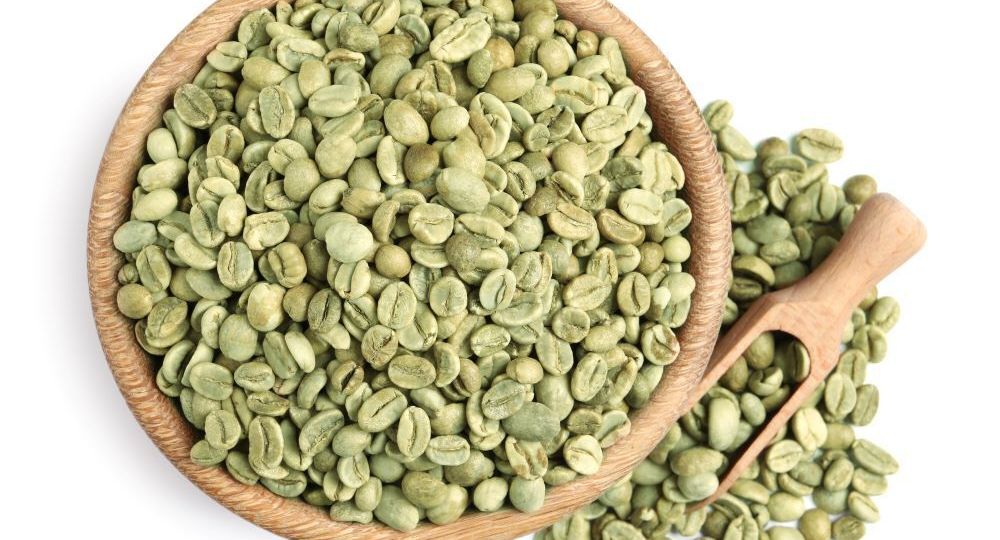
Unroasted green coffee beans are the raw seeds extracted from the fruit of coffee plants. Unlike their roasted counterparts, these beans are not subjected to the roasting process that imparts the characteristic flavor and aroma associated with coffee. Instead, they retain their natural green color and offer a unique profile of flavors and potential health benefits not found in roasted coffee.
The appeal of green coffee beans lies in their versatility for home roasting, allowing enthusiasts to customize the roast level to their preference, and their purported health advantages, including higher levels of chlorogenic acid compared to roasted beans.
Key Takeaways
- Single-Origin vs. Blended Coffees: The choice between single-origin and blended coffees is significant for coffee connoisseurs. Single-origin coffees provide distinct flavors characteristic of their specific growing region, offering a unique tasting experience. In contrast, blended coffees combine beans from various origins to create a balanced and smooth flavor profile, often at a more affordable price point.
- Influence of Origin on Flavor: The flavor of coffee beans is profoundly affected by their country of origin, soil composition, and elevation. Factors such as the amount of rainfall, average temperature, and even the specific region within a country can lead to vastly different flavor profiles, from bright acidity to deep, earthy notes.
- Processing Methods: The method used to process coffee beans, either washed or dry, significantly impacts their flavor. Washed (or wet-processed) beans are cleaned of their fruity exterior before drying, resulting in a cleaner and milder flavor. Dry-processed beans are left to dry with the fruit still attached, leading to a sweeter, more vibrant flavor profile, although this method has faced scrutiny over concerns of mycotoxin contamination.
- Organic and Fair Trade Certifications: Opting for organic green coffee beans, grown without synthetic fertilizers or chemicals, can ensure a purer taste and mitigate health risks. Additionally, certifications like Fair Trade and Rainforest Alliance signal sustainable and ethical farming practices, contributing to higher quality beans and supporting the livelihoods of coffee growers.
Types of Green Coffee Beans
- Varieties: Among the plethora of coffee bean varieties, Arabica and Robusta are the most prevalent. Arabica beans are prized for their smooth, complex flavor profiles, while Robusta beans offer a stronger, more robust taste. Heirloom Ethiopian beans, including varieties like Geisha, Typica, Bourbon, and Caturra, are renowned for their distinctive flavors, ranging from floral to fruity.
- Flavor Profiles: Each variety of green coffee bean brings its unique flavor characteristics to the cup. Arabica beans, for example, tend to have a sweeter, more delicate flavor with higher acidity, ideal for those who prefer a nuanced coffee experience. Robusta beans, on the other hand, are more bitter but pack a higher caffeine punch, suitable for those seeking a strong, invigorating coffee. The heirloom varieties from Ethiopia, with their diverse flavor notes, offer an exotic and complex tasting experience that can vary greatly from one region to another.
Sourcing and Sustainability
The sourcing of green coffee beans is a global endeavor, encompassing a network of producers, exporters, and buyers that spans continents. Green coffee beans are primarily sourced from countries within the coffee belt, a region that lies between the Tropics of Cancer and Capricorn. This includes nations in Africa, South America, and Asia, each offering beans with distinctive flavors shaped by their unique terroir.
Sustainability and ethical practices in coffee farming have become increasingly important as consumers grow more conscious of the environmental and social impacts of their purchases. Sustainable coffee sourcing involves practices that are ecologically responsible, economically viable, and socially equitable. This includes methods like shade-grown coffee, which preserves biodiversity, and organic farming, which avoids the use of synthetic pesticides and fertilizers.
Ethical practices also emphasize fair compensation and working conditions for farmers, often verified through certifications like Fair Trade and Rainforest Alliance. These efforts not only ensure the long-term viability of coffee farming communities but also contribute to the production of higher quality beans.
Health Benefits and Claims
Green coffee beans are touted for their health benefits, largely attributed to chlorogenic acid, a compound that is more prevalent in unroasted than roasted coffee beans. Claims include weight loss, lowered blood pressure, and reduced blood sugar levels. However, it’s important to approach these claims with caution as scientific evidence supporting them is limited and mixed.
While some studies suggest potential health benefits, others call for further research. Consumers should consider green coffee as part of a balanced diet and consult healthcare providers before using it for medicinal purposes.
Roasting Green Coffee Beans at Home
Roasting green coffee beans at home is an engaging process that allows coffee enthusiasts to customize the flavor profile of their brew. Here’s a simplified step-by-step guide:
- Equipment Preparation: Ensure you have a coffee roaster, which can range from a simple pan to a dedicated coffee roasting appliance. Preheat your roaster according to the manufacturer’s instructions.
- Roasting Process: Add green coffee beans to the roaster. Start the roast and watch closely as the beans transition through color stages from green to yellow to varying shades of brown. Listen for the “first crack,” an audible signal that roasting is underway.
- Monitoring and Control: Adjust the heat as needed to control the roast speed. Decide on the roast level you prefer: light, medium, or dark. Lighter roasts retain more of the bean’s original flavor, while darker roasts have a more intense, smoky taste.
- Cooling: Once the desired roast level is achieved, remove the beans from the heat and cool them quickly to stop the roasting process. This can be done by spreading the beans out on a baking sheet or using a cooling tray if your roaster has one.
- Resting: Allow the roasted beans to rest for several hours or up to a day to develop their full flavor profile before grinding and brewing.
Tips for Success:
- Start with high-quality green beans to ensure the best flavor.
- Keep detailed notes on roast times and temperatures for each batch to refine your process.
- Experiment with different roast levels and bean origins to explore a variety of flavor profiles.
Roasting green coffee beans at home not only offers a personalized coffee experience but also deepens one’s appreciation for the art and science of coffee making.
Selecting the Best Green Coffee Beans
When selecting green coffee beans for home roasting, consider the following criteria for ensuring high quality:
- Origin: Look for beans from reputable sources and renowned coffee-growing regions, as the origin can greatly influence flavor profiles.
- Bean Type: Arabica beans are generally preferred for their superior flavor and aroma compared to Robusta beans.
- Freshness: Fresh beans will yield the best roasting results. Check for information on the harvest date.
- Grade: High-grade beans are less likely to have defects that can affect taste.
- Certifications: Beans certified as organic, Fair Trade, or Rainforest Alliance indicate ethical and sustainable sourcing practices.
Top Picks:
- Ethiopian Yirgacheffe: Known for its bright acidity and complex flavors.
- Colombian Supremo: Offers a balanced taste with a sweet aroma.
- Sumatra Mandheling: Valued for its full body and smooth, earthy flavors.
FAQs
How should I store green coffee beans? Store them in a cool, dark place in a breathable bag, away from moisture and odors, to preserve freshness.
What’s the best method for roasting green coffee beans at home? Using a dedicated coffee roaster or a simple pan on the stove, aim for even heat distribution and monitor the color and aroma.
Can I brew green coffee beans without roasting them? Green coffee beans need to be roasted to develop the flavors typical of coffee. Brewing unroasted beans will not produce the same results.
How long after roasting should I wait before brewing? Allowing roasted beans to rest for at least 24 hours helps to develop a fuller flavor profile.
Final Thoughts
Exploring the world of unroasted green coffee beans opens up a realm of customization and personalization in coffee roasting and brewing that is unmatched by pre-roasted options. By selecting high-quality beans and applying careful roasting techniques, coffee enthusiasts can achieve unparalleled freshness and flavor.
The journey from green bean to the perfect cup of coffee is one of discovery and satisfaction, encouraging a deeper appreciation for the art of coffee making. Embrace the adventure of home roasting and enjoy the rich, diverse flavors that come with it.









